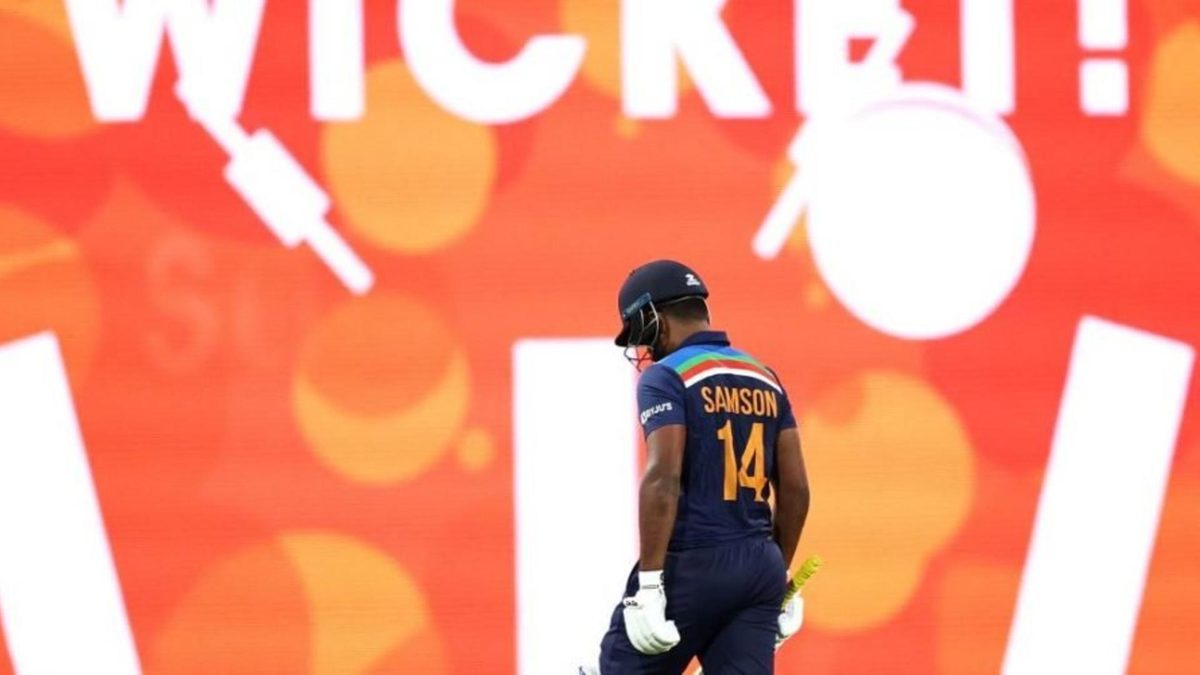
Despite the uninterrupted flow of talent from the IPL pipeline, India’s T20 selection and approach have remained archaic, but with that seemingly changing, Sanju Samson’s omission is irrational, writes Rohit Sankar.
India’s T20I squad announcement for the upcoming series against England was pleasantly surprising. Despite creating a franchise league that has managed to unearth some obscure talent in the country, India’s T20 selection had remained pretty controversial, primarily owing to an eerie resemblance to the ODI outfit.
Read on the takeaways from the Indian T20 squad named here.
However, the squad named for the England T20I series largely veered away from the questionable past, particularly in the batting department. The two uncapped players called up in the batting department – Suryakumar Yadav and Ishan Kishan – have one thing in common: they are both elite T20 players, those who counter both pace and spin, eliminate dot balls and fare better in metrics like strike-rate and boundary ball percentages over old-fangled ones like batting average. Rishabh Pant, who is cut from the same cloth, also made a return to the side.
Rahul Tewatia, the other uncapped player, is one among four players in the squad with all-round skills. Each of them caters to specific skills preferred in T20 all-rounders. If Hardik Pandya is a spin hitter who can chip in with the ball, Washington Sundar is a powerplay bowler who can bat, while Axar Patel is a late-order batsman who bowls in the middle overs. Tewatia adds raw power and a wrist spin option to favour the double wrist-spin attack alongside Yuzvendra Chahal.
Sanju Samson’s 26 Sixes of IPL 2020 …🔥
ABSOLUTELY CLEAN HITTER OF THE BALL 😍@IamSanjuSamson @rajasthanroyals #SanjuSamson #ipl2020 #Sixes#compilation #IPL2021 #INDvsENG #motivation #RajasthanRoyals #sunrisers @BCCI #Ipl #Auction #Captain #Trending pic.twitter.com/whi1LDTjsP— Time Traveller (@SaiSuma90637578) February 3, 2021
The addition of new faces and the return of the likes of Pant point towards India increasingly recognising the need to play a stronger brand of T20 cricket. It is here that Sanju Samson’s omission swerves away from that very thinking, and adheres to an age-old mindset Indian cricket would do well to get away from.
Samson is a terrific T20 player. If his international record doesn’t reflect that, it is primarily due to a lack of consistent opportunities in similar roles; for instance, he has batted in four different positions in his seven T20Is for India. While batting positions mean very little in T20 cricket, when it is as diverse as opening and batting at No.7, it holds importance when considered to discard a player who has a very small sample size of playing in the same kind of roles.
In Australia, Samson batted thrice, never making more than 23, but had a strike-rate of over 150 in the two knocks where he faced ten or more balls. Samson’s elite mindset and attacking approach, signed off by the management, stems from similar knocks in the IPL where his clean hitting against pace and spin has garnered much praise.
In IPL 2020, Samson struct at a rate of 160 or more against all but one bowling type. He finished the season with a strike-rate of 158.89, scoring a boundary every five balls on an average. With 26 sixes, he finished behind Ishan Kishan as the second-highest six-hitter in the season. In the middle overs, where teams often tend to rotate the strike and fall behind on the run-rate, Samson struck at a rate of 177, the best by any Indian batsman by a large distance. It only gets better in the death overs.
[breakout id=”0″][/breakout]
Samson’s T20 numbers are gold, his intent remarkably good.
Samson’s lockdown training included a dose of range-hitting, a drill that involves placing cones at different corners far away, acting like a boundary of sorts, which helped him try and clear the ropes, ball after ball. It reflected in his performance in the IPL.
Often termed ‘reckless’ for his dismissals, Samson brings with him an approach that India have sorely missed in the top and middle-order. Kishan and Suryakumar add more of this positive intent, but Rohit Sharma, KL Rahul, Shikhar Dhawan, Virat Kohli and Shreyas Iyer all prefer time to settle in before teeing off.
Samson does not play like a Kohli or a Rohit. He may not make a half-century every fourth or fifth game, but the bottom line is he needn’t do that. What he does do is go on the charge from ball one, a superlative skill in a format that demands exactly that. His omission, at a time when India seem to be finding its way to a more vogue approach in the format, is a step backwards.








